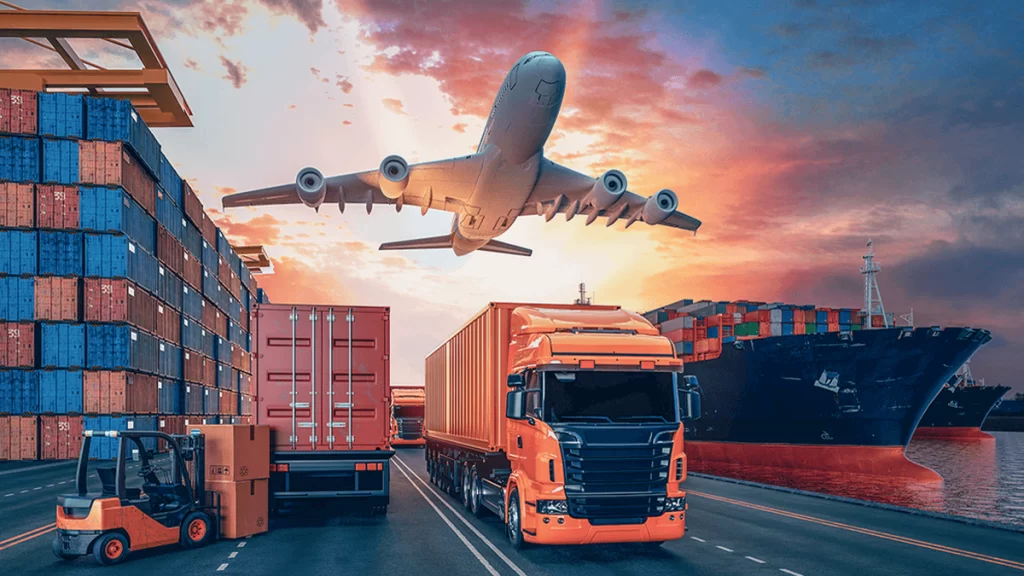A Deep Dive into Transportation Modes and their Costs in Logistics
In the complex realm of logistics, the choice of transportation mode significantly impacts the efficiency, cost-effectiveness, and timeliness of delivering goods. Each mode offers distinct advantages and is tailored to specific logistical needs based on factors such as speed, reliability, on-time performance, cost per mile, and ease of use. Here’s an in-depth look at the various types of transportation:
1. Road Transportation
Overview: Road transport remains the backbone of logistics, offering flexibility and accessibility for both short and medium distances. This includes but is not limited to cars, vans, refrigerated cargo vans, trucks and 18-wheelers.
Speed: Road transport provides moderate to high speeds, depending on factors such as road conditions, traffic density, and distance traveled. It’s ideal for shipments that require quick turnaround times within regional or national boundaries. Usually preferred for shorter distances since logistics companies understand the route.
Reliability: While susceptible to traffic congestion and weather conditions, road transport is generally reliable for shorter distances. Advanced tracking and navigation technologies help mitigate risks and optimize routes.
On-Time Performance: On-time performance can vary due to external factors like traffic jams and unforeseen delays. However, efficient route planning and real-time updates can minimize disruptions.
Cost per Mile: The cost per mile in road transport is influenced by fuel prices, vehicle maintenance, tolls, and labor costs. It’s typically moderate compared to other modes, making it economical for short to medium hauls. You can see on average a 2$-4$ cost per mile on average. This transportation mode is even cheaper on the truck driver side of things for owner operators(source).
Ease of Use: Road transport offers door-to-door delivery capabilities, making it highly convenient and accessible for businesses of all sizes. It’s suitable for a wide range of goods, from perishables to consumer products.
2. Rail Transportation
Overview: Rail transport plays a crucial role in transporting bulk goods over long distances, often integrated with other modes in intermodal logistics.
Speed: Rail transport is known for its efficiency over long distances, offering higher speeds compared to road transport due to dedicated tracks and fewer stops. However, transit times can vary depending on network congestion and scheduled stops.
Reliability: Rail transport is generally reliable with predictable schedules and fewer weather-related disruptions compared to road transport. It provides a stable option for moving large volumes of goods consistently. Very good on delivering large items safely.
On-Time Performance: On-time performance in rail transport is typically high due to scheduled services and dedicated freight corridors. Delays are less frequent compared to road transport, its known for its enhancing reliability.
Cost per Mile: Rail transport is cost-effective for long-distance hauls and bulk cargo. The cost per mile is lower compared to road transport, primarily due to fuel efficiency and the ability to transport large volumes in a single trip. You can estimate about 150$/per mile to transport 1000lbs.
Ease of Use: Rail transport requires coordination with other modes for first-mile and last-mile delivery, often through intermodal facilities. It’s well-suited for industries like mining, agriculture, and manufacturing that require efficient bulk transportation.
3. Maritime Transportation
Overview: Maritime transport is essential for global trade, facilitating the movement of goods across oceans and seas.
Speed: Maritime transport is slower compared to road, rail, and air transport due to vessel speeds and maritime regulations. However, it is indispensable for transporting large volumes over vast distances, especially international.
Reliability: Maritime transport offers reliable services with scheduled sailings and established routes. However, it can be affected by weather conditions, port congestion, and transit times influenced by sea conditions.
On-Time Performance: On-time performance in maritime transport requires careful scheduling and contingency planning due to variable factors such as weather, port operations, and shipping lane congestion.
Cost per Mile: Maritime transport is highly cost-effective for long-distance shipments and bulk cargo. The cost per mile is lower compared to air transport but can vary based on fuel prices, shipping routes, and port charges. This cost ranges but can be very cheap at scale. Its on average about 2$-3$ per mile.
Ease of Use: Maritime transport involves complex logistics for loading and unloading at ports, customs clearance, and compliance with international regulations. It’s ideal for transporting commodities, raw materials, and oversized goods that are not time-sensitive.
4. Air Transportation
Overview: Air transport is renowned for its speed and efficiency in transporting high-value and time-sensitive goods worldwide.
Speed: Air transport is the fastest mode of transport, offering rapid delivery over long distances. It’s essential for industries requiring urgent shipments and just-in-time inventory management.
Reliability: Air transport is highly reliable with frequent flight schedules and minimal weather disruptions at cruising altitudes. It ensures time-sensitive cargo reaches its destination promptly.
On-Time Performance: On-time performance in air transport is excellent due to stringent flight schedules and efficient air traffic management. Delays are minimal compared to other modes of transport. This is the most reliable way of transport due to its direct flight, and lack of traffic.
Cost per Mile: Air transport has a higher cost per mile compared to road, rail, and maritime transport due to fuel costs, handling charges, and infrastructure investments. However, the speed and reliability justify the higher costs for certain shipments. They usually range on the more expensive side from around 12$ to upwards of 20$ per mile.
Ease of Use: Air transport requires specialized handling for goods, including packaging, security checks, and compliance with aviation regulations. It’s suitable for perishable goods, pharmaceuticals, electronics, and high-value items where speed and reliability are paramount.
Conclusion
Choosing the right transportation mode in logistics is a strategic decision that impacts supply chain efficiency, customer satisfaction, and operational costs. By understanding the strengths and limitations of each transportation mode —whether it’s the flexibility of road transport, efficiency of rail transport, global reach of maritime transport, or speed of air transport—businesses can optimize their logistics operations for success. Continuous evaluation of transportation options and leveraging technological advancements are key to staying competitive in the dynamic field of logistics.

